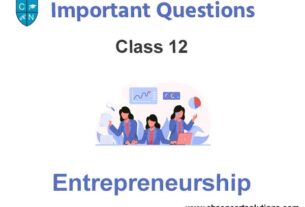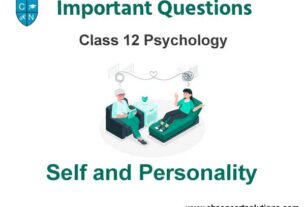Students can read the Case Study questions given below for Contemporary South Asia Class 12 Political Science. All Contemporary South Asia Class 12 Notes and questions with solutions have been prepared based on the latest syllabus and examination guidelines issued by CBSE, NCERT and KVS. You should read all Case Study Questions provided by us and the Class 12 Political Science Case Study Questions provided for all chapters to get better marks in examinations.
Case Study Questions of Contemporary South Asia Class 12
There are certain organisations which are set up for providing services to its members and the public in general. Such organisations are called Not for Profit Organisation. Eg: Clubs, charitable institutions, schools, welfare societies etc.
Question. Study the cartoon given below carefully and answer the following questions:
Question. Which country’s problem is depicted here?
(A) Tamil Nadu in India
(B) South India
(C) Sri Lanka
(D) Indian Tamils
Answer
C
Question. What does tiger in the cartoon represent?
(A) Sinhala community
(B) Sri Lankan rebels
(C) LTTE
(D) None of the above
Answer
C
Question. Which external powers that helped to resolve issues?
(A) France and Canada
(B) USA and Russia
(C) Pakistan
(D) Norway and Iceland
Answer
D
Question. What does lion in the cartoon represent?
(A) Sinhala community
(B) LTTE
(C) Indian Tamils
(D) Opposition party in Sri Lankan government
Answer
A
Question. Read the following paragraph and answer the questions that follow:
Territorial disputes over the Kashmir region sparked two of the three major Indo- Pakistani wars in 1947 and 1965, and a limited war in 1999. Although both countries have maintained a fragile cease-fire since 2003, they regularly exchange fire across the contested border, known as the Line of Control. Both sides accuse the other of violating the cease-fire and claim to be shooting in response to attacks. An up-tick in border skirmishes that began in late 2016 and continued into 2018 killed dozens and displaced thousands of civilia ns on both sides of the Line of Control. In 2014, after India’s then newly elected Prime Minister Modi invited then Pakistani Prime Minister Nawaz Sharif to attend his inauguration, there were hopes that Modi’s government would pursue meaningful peace negotiations with Pakistan. However, after a brief period of optimism, relations turned sour once more when India canc elled talks with Pakistan’s foreign minister in August 2014 after the Pakistani high commissioner in India met with Kashmiri separatist leaders. A series of openings continued throughout 2015, including an unscheduled December meeting on the side-lines of the UN Climate Change Conference in Paris. This led to a meeting between national security advisors in Bangkok a few days later, where the Kashmir dispute was discussed. Later in December, Prime Minister Modi made a surprise visit to Lahore to meet with Prime Minister Sharif, the first visit of an Indian leader to Pakistan in more than a decade.
Question. Under whose leadership in India, there was a hope of peace on LOC?
(A) Dr. Manmohan Singh
(B) Indira Gandhi
(C) Narendra Modi
(D) Rajiv Gandhi
Answer
C
Question. In which years, according to this paragraph, India and Pakistan were involved in face to face conflicts?
(A) 1947, 1965, 1999
(B) 1971, 1961, 1999
(C) 1991, 1999, 2003
(D) None of the above
Answer
A
Question. When did PM Narendra Modi make a surprise visit to Pakistan?
(A) November 2015
(B) December 2015
(C) March 2015
(D) January 2015
Answer
B
Question. Till which year both the countries have maintained “fragile cease fire”?
(A) 2005
(B) 2003
(C) 1999
(D) 2016
Answer
B
Question Read the following paragraph and answer the questions that follow:
The Sri Lankan problem involves people of Indian origin, and there is considerable pressure from the Tamil people in India to the effect that the Indian government should protect the interests of the Tamils in Sri Lanka. The government of India has from time to time tried to negotiate with the Sri Lankan government on the Tamil question. But in 1987, the government of India for the first time got directly involved in the Sri Lankan Tamil question. India signed an accord with Sri Lanka and sent troops to stabilise relations bet ween the Sri Lankan government and the Tamils. Eventually, the Indian Army got into a fight with the LTTE. The presence of Indian troops was also not liked much by the Sri Lankans. They saw this as an attempt by India to interfere in the internal affairs of Sri Lanka. In 1989, the Indian Peace Keeping Force (IPKF) pulled out of Sri Lanka without attaining its objective. The Sri Lankan crisis continued to be violent. However, international actors, particularly the Scandinavian countries such as Norway and Iceland tried to bring the warring groups back to negotiations. Finally, the armed conflict came to an end, as the LTTE was vanquished in 2009.
Question. When did government of India directly got involve in the conflict of Sri Lanka?
(A) in 1987
(B) in 1988
(C) in 1990
(D) in 1989
Answer
A
Question. Who posed challenge to Indian Army in Sri Lanka?
(A) Local Tamils
(B) Indian Tamils
(C) LTTE
(D) Sri Lankan government
Answer
C
Question. Why was there a pressure of Indian Tamils to protect and safeguard the interests of Tamil living in Sri Lanka?
(A) Because Tamils living in Sri Lanka share the same ethnicity with Indian Tamils.
(B) Because the conflict in Sri Lanka involves people of Indian origin.
(C) Because Tamils from Sri Lanka are the ancestors of Indian Tamils.
(D) All of the above
Answer
B
Question. When did IPKF have to abort the objective in Sri Lanka?
(A) 1989
(B) 1990
(C) 1999
(D) 2009
Answer
A
Question. Read the following paragraph and answer the questions that follow:
After Pakistan framed its first constitution, General Ayub Khan took over the administration of the country and soon got himself elected. He had to give up office when there was popular dissatisfaction against his rule. This gave way to a military takeover once again under General Yahya Khan. During Yahya’s military rule, Pakistan faced the Bangladesh crisis, and after a war with India in 1971, East Pakistan broke away to emerge as an independent country called Bangladesh. After this, an elected government under the leadership of Zulfikar Ali Bhutto came to power in Pakistan from 1971 to 1977. The Bhutto government was removed by General Zia-ul-Haq in 1977. General Zia faced a pro-democracy movement from 1982 onwards and an elected democratic government was established once again in 1988 under the leadership of Benazir Bhutto. In the period that followed, Pakistani politics centred around the competition between her party, the Pakistan People’s Party, and the Muslim League. This phase of elective democracy lasted till 1999 when the army stepped in again and General Pervez Musharraf removed Prime Minister Nawaz Sharif. In 2001, General Musharraf got himself elected as the President. Pakistan continued to be ruled by the army, though the army rulers have held some elections to give their rule a democratic image. Since 2008, democratically elected leaders have been ruling Pakistan.
Question. Why democracy isn’t stable in Pakistan?
(A) It is a communist state.
(B) Military has all the power.
(C) People are anti-democracy.
(D) None of the above.
Answer
B
Question. Pakistan’s first constitution was enacted by the Constituent Assembly in
(A) 1956
(B) 1947
(C) 1962
(D) 1952
Answer
A
Question. Who removed Bhutto’s govt.? When?
(A) General Zia-ul-Haq, 1977
(B) General Yahya Khan, 1990
(C) Benazir Bhutto, 1976
(D) Asif Ali zardari, 2000
Answer
A
Question. How long did Zulfikar Ali Bhutto’s Government lasted?
(A) 1971 to 1988
(B) 1971 to 1976
(C) 1971 to 1977
(D) 1971 to 1973
Answer
C



